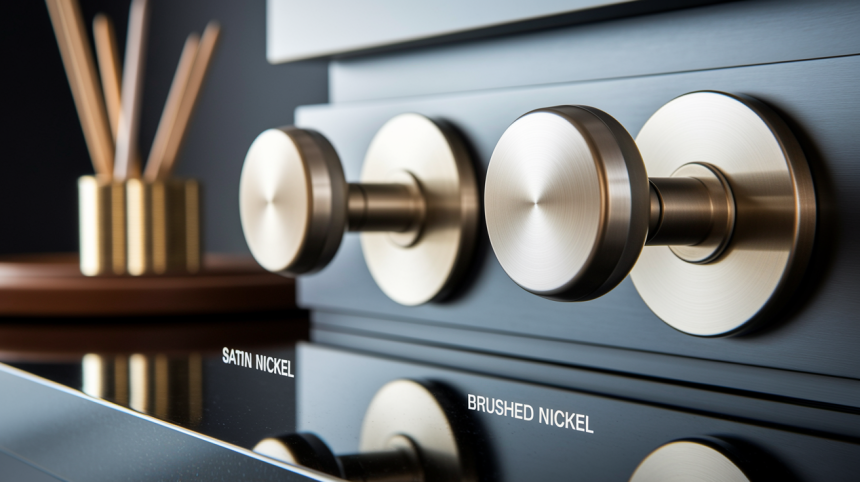The subtle distinction between satin nickel and brushed nickel can dramatically impact your home’s aesthetic, yet most homeowners struggle to articulate the difference between these popular finishes.
When selecting hardware, fixtures, or accessories, this seemingly minor choice significantly influences how light plays across surfaces and how spaces feel.
Both finishes offer contemporary elegance with practical durability, but their special properties suit different design goals and living situations.
Satin nickel’s warmer glow creates a distinctly different atmosphere than brushed nickel’s cooler, more industrial presence.
This guide cuts through the confusion, clarifying the distinctive characteristics, ideal applications, and practical considerations for each finish—empowering you to make confident decisions that enhance your home’s design integrity.
Understanding Satin Nickel
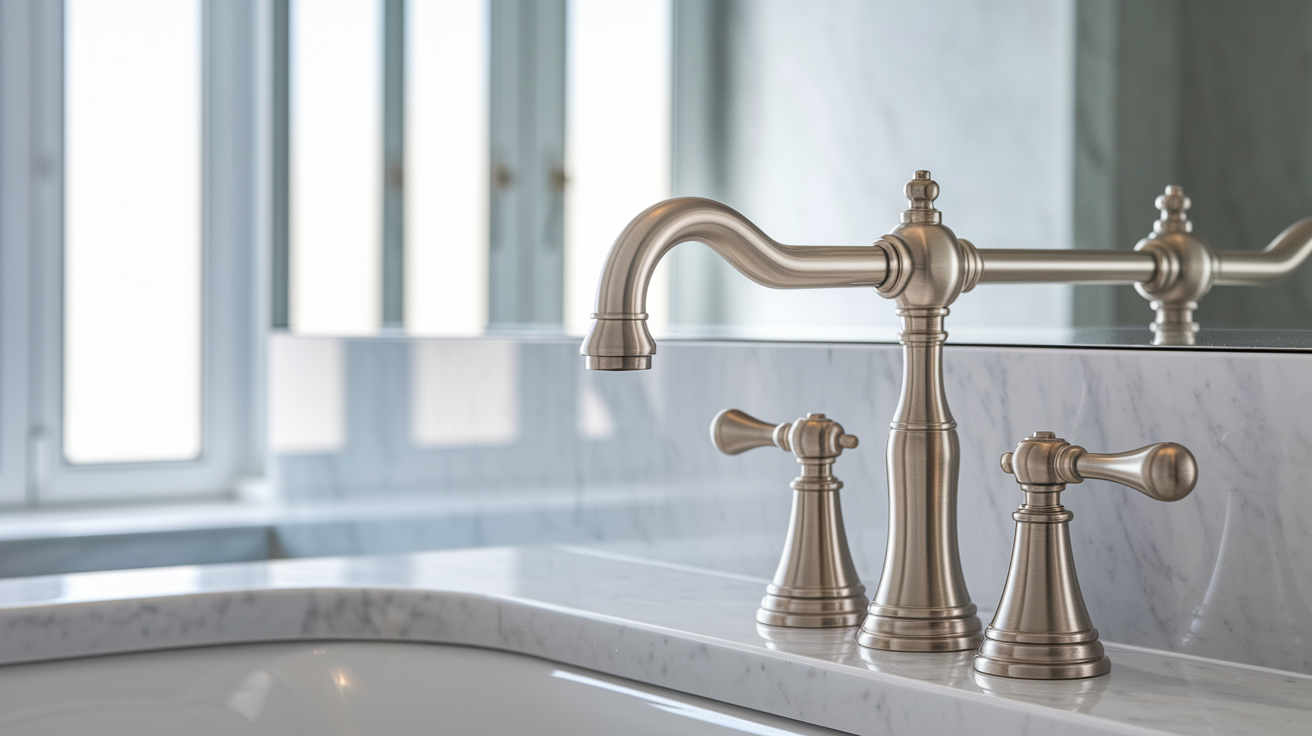
Satin nickel is a premium metal finish created by applying nickel plating to a base metal through an electroplating process, then giving it a softer appearance through additional treatment.
Key characteristics:
- Warm silver-tone with subtle gold or bronze undertones.
- Smooth, even surface with a soft, understated luster.
- Non-reflective finish that diffuses light rather than creating glare.
- Contemporary appearance that complements modern and transitional design styles.
The finish has a refined, polished look that provides enough visual interest without overwhelming other design elements in a space.
Manufacturing Process
| Step | Process | Result |
|---|---|---|
| 1. Preparation | Base metal (usually brass or zinc) is cleaned and polished. | Smooth surface ready for plating. |
| 2. Electroplating | Metal is immersed in nickel solution; an electrical current is applied. | Nickel ions bond to the base metal. |
| 3. Buffing | Light buffing with fine abrasives. | Creates characteristic satin sheen. |
| 4. Protective Coating | A clear protective lacquer is applied. | Enhanced durability and corrosion resistance. |
This multi-step manufacturing process creates the distinctive soft sheen that defines satin nickel, positioning it between highly polished and completely matte finishes.
Common Applications
Satin nickel’s versatility makes it popular across numerous home applications:
• Kitchen and Bathroom: Faucets, shower fixtures, cabinet pulls, towel bars
• Door Hardware: Doorknobs, lever handles, hinges, door stops
• Lighting: Pendant lights, sconces, ceiling fixtures, lamp bases
• Furniture: Drawer pulls, table legs, decorative accents
• Accessories: Picture frames, curtain rods, switch plates, bathroom accessories
The finish is particularly common in kitchens and bathrooms, where its ability to hide water spots and fingerprints better than shinier finishes makes it both attractive and practical for high-use areas.
Understanding Brushed Nickel
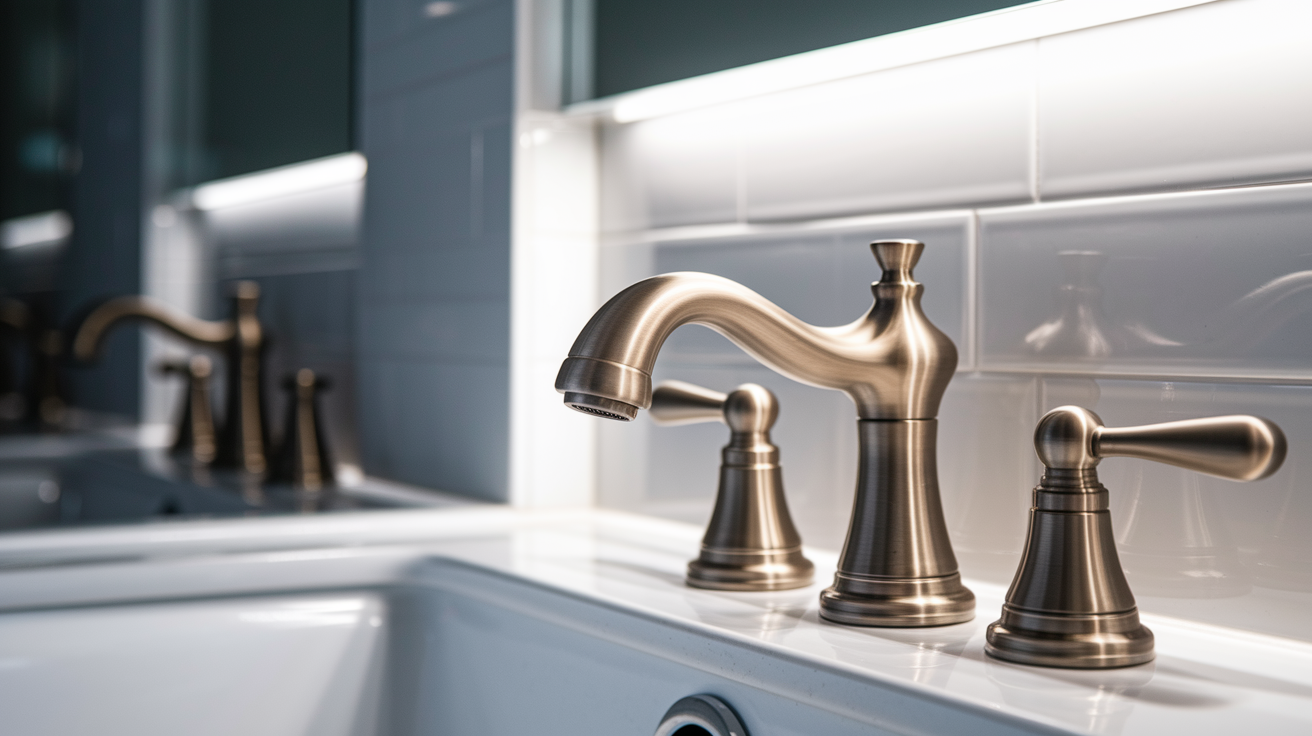
Brushed nickel features a distinctive matte appearance created by visible brush strokes across its surface, giving it both visual texture and tactile character.
Key characteristics:
- Cooler silver-gray tone with less warmth than satin nickel
- Visible linear texture from the brushing process
- Slightly rougher feel when touched compared to satin finishes
- Matte appearance that reflects minimal light
- Industrial quality that pairs well with rustic, modern farmhouse, and industrial design styles
The directional grain of brushed nickel adds subtle visual interest and depth to hardware, making it particularly effective in spaces that prioritize texture over shine.
Manufacturing Process
| Step | Process | Result |
|---|---|---|
| 1. Preparation | Base metal (brass or zinc) is cleaned and prepared. | Clean surface ready for plating. |
| 2. Electroplating | Metal receives standard nickel plating | An initial shiny nickel layer. |
| 3. Brushing | Wire brush or abrasive belt applied in a single direction. | Creates fine, linear scratches. |
| 4. Finishing | Light buffing to remove sharp edges. | Preserves texture while smoothing. |
| 5. Protection | A clear protective coating was applied. | Enhances durability while maintaining a matte look. |
This directional brushing technique is what gives brushed nickel its distinctive appearance and tactile quality.
Common Applications
Brushed nickel’s practicality and durability make it popular across numerous home applications:
- Kitchen and Bathroom: Faucets, sink fixtures, cabinet pulls, appliance handles
- Door Hardware: Doorknobs, lever handles, hinges, door stops
- Lighting: Pendant lights, chandeliers, wall sconces, ceiling fans
- Furniture: Drawer pulls, table bases, chair legs, shelving hardware
- Accessories: Towel bars, shower rods, switch plates, register covers
The finish is particularly valued in busy households where its textured surface effectively hides fingerprints, water spots, and minor scratches—making it extremely practical for high-traffic areas.
Key Differences Between Satin Nickel and Brushed Nickel
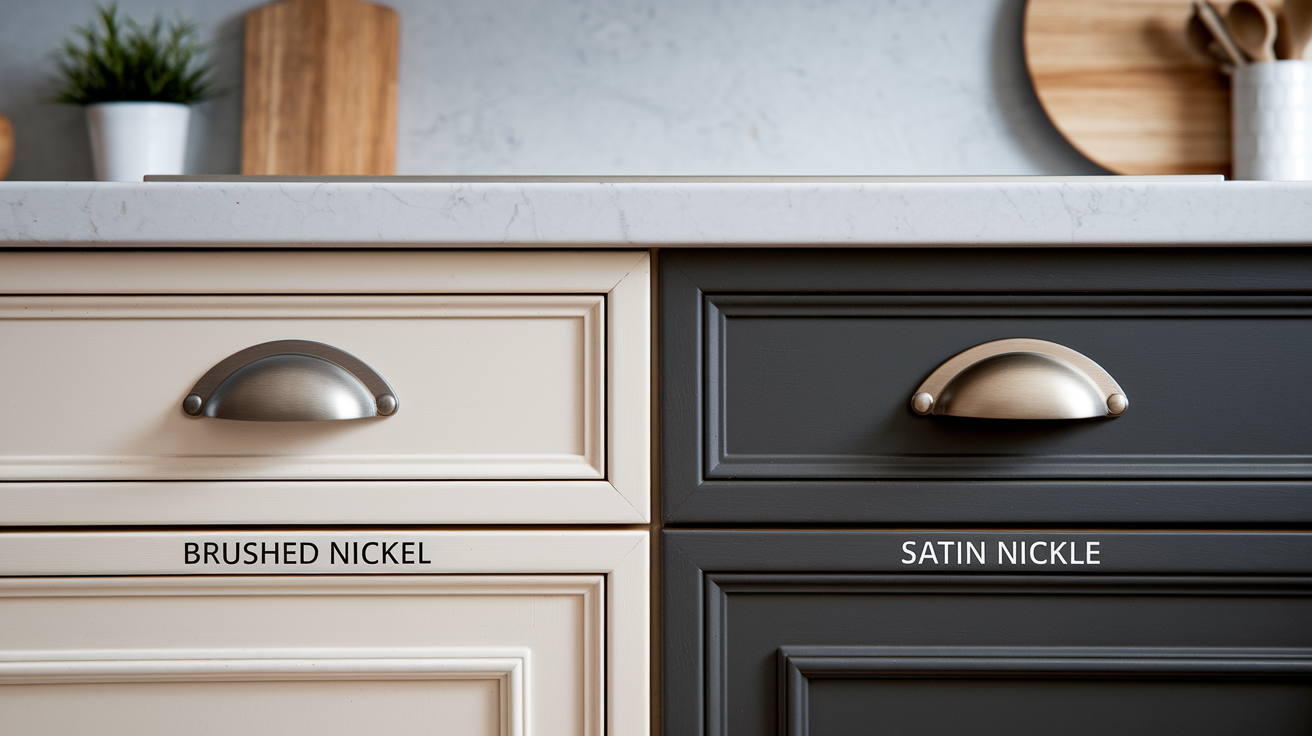
Appearance
Satin nickel provides a smooth, refined finish with a subtle luster that softly reflects light, creating a warm ambiance.
Brushed nickel displays visible directional grain lines that add texture and dimension, offering a cooler, more utilitarian aesthetic ideal for contemporary spaces.
Durability
Brushed nickel’s textured surface excellently conceals fingerprints, water spots, and minor scratches, making it perfect for high-traffic areas and homes with children.
Satin nickel, being smoother, may reveal wear more readily over time, especially on frequently touched surfaces like doorknobs and cabinet pulls.
Cost
Satin nickel typically costs 10-15% more than brushed nickel due to its more labor-intensive manufacturing process, which requires additional buffing steps.
This price difference becomes more significant when furnishing an entire home with multiple fixtures and hardware pieces.
Maintenance
Satin nickel’s smooth surface allows for easy cleaning with just a soft cloth and mild soap, with fewer crevices to trap dirt or cleaning products.
Brushed nickel requires slightly more attention as its textured grooves can collect dust and residue, sometimes needing a small brush to clean effectively.
Factors to Consider When Choosing Between Satin and Brushed Nickel
| Factor | Satin Nickel | Brushed Nickel |
|---|---|---|
| Design Aesthetics | Modern, contemporary styles with refined, sophisticated look | Rustic, industrial, traditional with textured, practical appearance |
| Functional Considerations | Better for low-traffic areas but shows fingerprints more easily | Ideal for high-traffic areas as it hides fingerprints and scratches |
| Budget Constraints | Typically 10-15% more expensive as a premium option | More economical and offers better value for whole-home projects |
| Room Compatibility | Excellent for formal dining rooms, living rooms, and master bathrooms | Perfect for kitchens, family bathrooms, and high-use entryways |
| Matching Existing Fixtures | Coordinates well with chrome and polished metals | Pairs naturally with stainless steel appliances and fixtures |
| Cleaning Requirements | Easier to wipe clean but shows smudges more quickly | Requires slightly more effort to clean but hides dirt longer |
| Trend Longevity | Classic finish that has maintained popularity for decades | Practical finish with enduring appeal in various design trends |
Mixing Metal Finishes in Home Décor
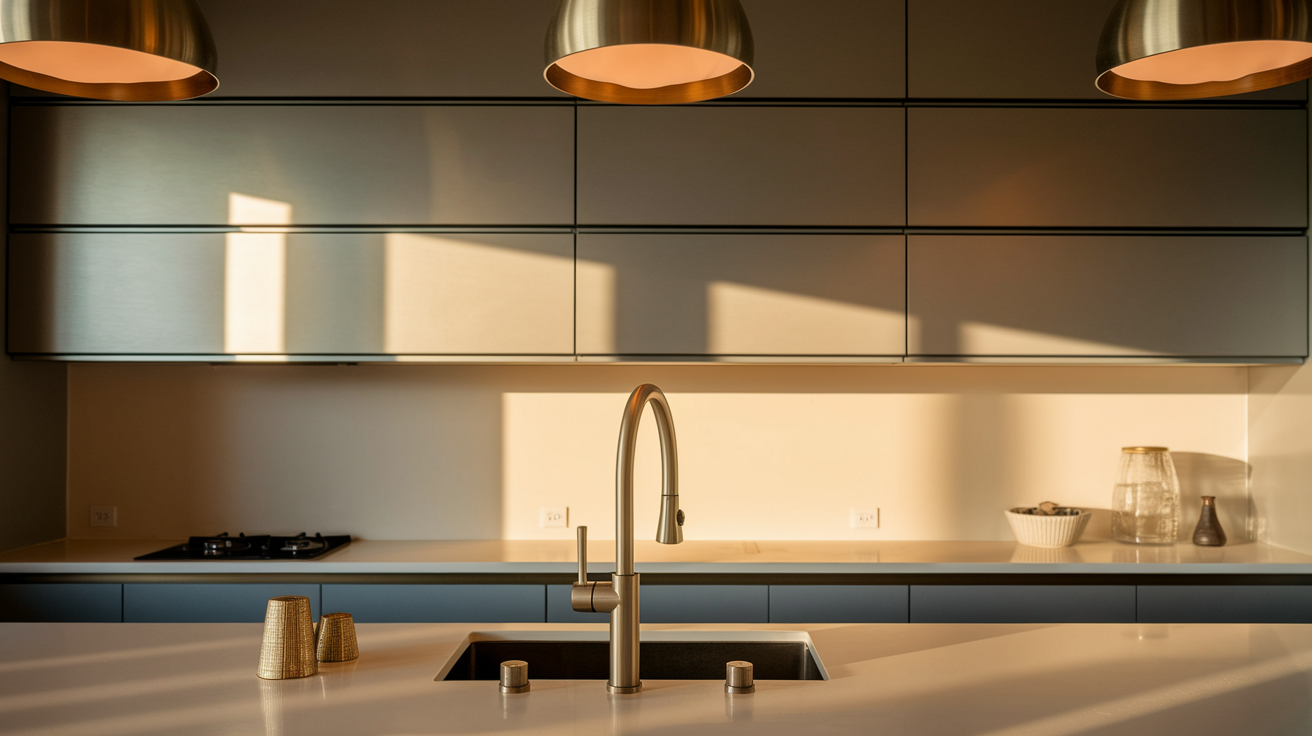
Successfully mixing metal finishes requires intentional design choices to create harmony.
Start by selecting either satin or brushed nickel as your dominant finish for roughly 60-70% of all metals in a space. Limit yourself to no more than three different metal finishes per room to avoid visual confusion.
Consider undertones when pairing metals—satin nickel works beautifully with gold or brass, while brushed nickel complements chrome or stainless steel.
Create a purposeful contrast between finishes so they appear intentionally different rather than mismatched. Always repeat each metal at least twice throughout the space to establish visual cohesion.
Conclusion
The choice between satin nickel and brushed nickel at the end hinges on your specific priorities: the exact level of warmth you seek, your home’s existing color palette, your cleaning routine, and the overall design statement you wish to make.
Both finishes offer exceptional versatility and longevity compared to more trend-driven alternatives, making either a sound investment for your home.
When making your selection, consider not just how the finish looks in isolation but how it interacts with your lighting, complements your color scheme, and contributes to the holistic design language of your space.
The most successful applications arise when these finishes are chosen with intention rather than by default.
Have you used either satin or brushed nickel in your home, and what has your experience been? Share your thoughts in the comments below!

